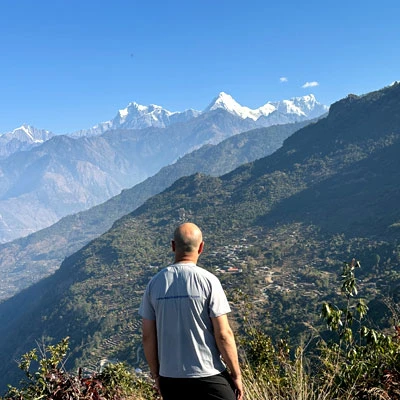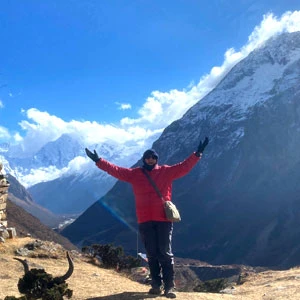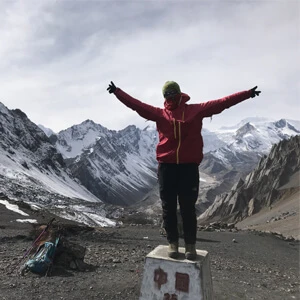Trekking Regions and Permit Fee
Everest Region:
The Everest-Khumbu region is situated in the northeast of Nepal and is home, of course, to the world's highest mountain, Everest, soaring up to a daunting altitude of 8848 meters. Other Himalayan giants standing at over 8000 meters, such as Lhotse, Makalu, and Cho Oyu, can also be found in the area. The region is home to Sagarmatha National Park and features some of the finest trekking in Nepal, as well as some of the most difficult. Hiking to the foot of such a legendary mountain is both awe-inspiring and humbling—and certainly one to be savored.
Recommended Treks:
1. Everest Base Camp Trek
2. Everest Three High Passes Trek
3. Gokyo Valley Trek
4. Everest Base Camp with the Gokyo Valley Trek
5. Everest View Trek
6. Pikey Peak Trek

To the far northeast lies yet another giant, the third-largest mountain in the world, Mt. Kanchenjunga (8586 m). The region borders both India and Tibet and encompasses a unique conservation area, a tri-national peace park bordering three nations. It was opened to trekking in 1988 and includes pristine routes that offer spectacular scenery, abundant wildlife, and rich cultural diversity, as well as dramatic views of Everest, Lhotse, Makalu, and of course the mighty Kanchenjunga itself.
Recommended Treks:
1. Kanchenjunga Circuit Trek
2. Kanchenjunga North Base Camp Trek

Situated in the central-west of Nepal lies the Manaslu region, home to the world's eighth-highest peak (8156 m) of the same name as well as the equally impressive and holy mountains of Ganesh Himal (7406 m) and Himalchuli (7893 m). The region was closed off to travelers through 1991 to protect the fragile environment and cultural heritage of the area. Since its opening to the outside world, it has become increasingly popular and is now considered one of the premier trekking destinations in Nepal due to its stunning scenery, unique culture, and pristine wilderness.
Recommended Treks:
1. Manaslu Circuit Trek
2. Manaslu Tsum Valley Trek
3. Tsum Valley Trek
4. Manaslu Annapurna Circuit Trek

The Annapurna region has long been one of Nepal's most popular trekking areas, with easy access from the major trekking hub of Pokhara, which is close at hand. Rivaling Everest for the sheer scale of its many soaring peaks, the Annapurna massif not only encompasses the eponymous and deadly peak that stands at an altitude of 8091 meters, but a range of 13 other mountains that soar over the 7000-meter mark. Not only does the area lay claim to some of the best trekking routes in the Himalayas, but it's also home to the world's highest body of water, Lake Tilicho, which lies at 4919 meters above sea level.
Recommended Treks:
1. Annapurna Base Camp Trek
2. Annapurna Circuit Trek
3. Annapurna Circuit with the Tilicho Lake Trek
4. Ghorepani Poon Hill Trek
5. Mardi Himal Trek
6. Mohare Danda Trek
7. Khopra Danda Trek
8. Short Annapurna Base Camp Trek
9. Upper Mustang Trek
10. Nar Phu Valley Trek
11. Short Annapurna Circuit Trek

Just north of Kathmandu lies the Langtang Valley, another region that has been very popular with trekkers through the years. Home to some of Nepal's most beautiful and diverse scenery, Langtang is also renowned for its diverse cultures, including people of widely disparate belief systems who live harmoniously in the region. For those seeking serene hiking, beautiful scenery, and a range of options for extending their journey, Langtang is a perfect choice.
Recommended Treks:
1. Langtang Valley Trek
2. Langtang Gosaikunda Trek
3. Tamang Heritage Trek

Mustang Region:
Mustang, formerly the ancient kingdom of Lo, has only been open to the outside world on a limited basis since 1992. It is located to the north of Annapurna on the same plateau as Tibet to the north. Home to the highly unique Tibetan communities that have lived in the region for centuries, the area offers an extraordinary perspective on the time capsule of ancient Buddhist traditions and religious customs that have been carefully preserved through limited access. Sheltered from the monsoon rains of the Indian plains by the Annapurna massif, the Mustang region differs markedly from the southern trekking regions insofar as it is a highly arid desert landscape of stratified outcrops and deeply eroded canyons that bear a closer comparison to Tibet than the rest of Nepal. So, if you're looking for a cultural journey back in time as well as a highly unique and isolated landscape, the Mustang region may be the ideal destination for you.
Recommended Trek:
1. Upper Mustang Trek

Mugu Region:
Founded in 1979, Rara National Park is named for the beautiful lake at its heart, the largest in all of Nepal. Situated at an altitude of 2990 meters above sea level, the park and its abundant forests were established as a means to not only preserve the lake's extraordinary beauty and magical setting but also as a key staging point for migratory bird species, many of them rare. The park's diverse range of wildlife and flora makes it one of Asia's most important biospheres and provides limitless possibilities for eco-tourism amidst some of Nepal's most stunning landscapes.

Dolpo, like Mustang, is a remote high-altitude region of Nepal that's a unique preserve of Tibetan culture that's remained largely untouched by outside influences thanks in no small part to its inaccessibility and the trekking restrictions that forbade entry until little more than twenty years ago.
Dolpo is a region known for its extraordinary beauty, rugged treks, and high altitudes. It is divided into two sections: the upper section on the Tibetan plateau, which is essentially a high-altitude desert scape, and the lower section, which is heavily forested and home to the tranquil beauty of mountain-locked Phoksundo Lake. The vast majority of sparsely populated Dolpo lies at an altitude in excess of 3500 meters and is home to some of the world's highest communities and nomadic people still living out an existence that has remained largely unchanged for centuries.
Recommended Treks:
1. Lower Dolpo Trek
2. Upper Dolpo Trek

Note:
- Trekking permits are not required for children under the age of ten.
- The National Park/Conservation Area/Special Permits are only valid for use in the specific areas that they are designated for on a one-time basis; once you exit the region, they are invalid for further use.
- Two passport-size photographs are required when applying for permits.
- Trekking permits are not refundable.
- Permits must be carried at all times during a trek and must be shown on request to appropriate government officials at various checkpoints.
- Trekkers need to obtain all the necessary trekking permits in either Kathmandu or Pokhara before their departure. If they set out without the appropriate permits, they will be charged twice the set rates at the checkpoints.
- A TIMS card is all that's necessary to trek in open trekking regions such as Langtang, Annapurna, Everest, etc.















